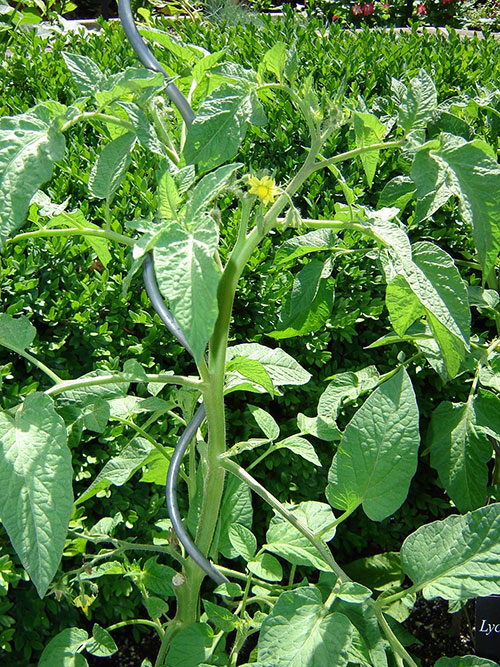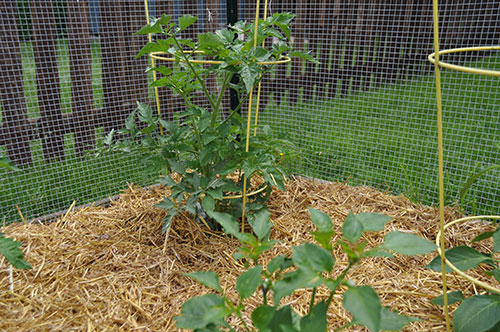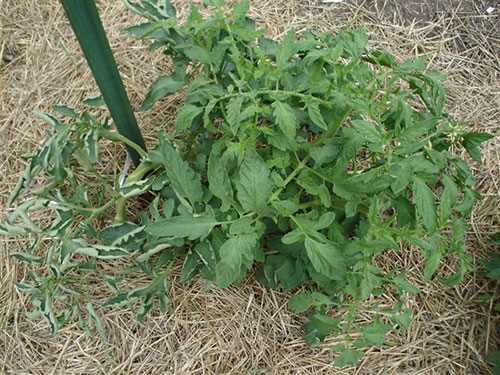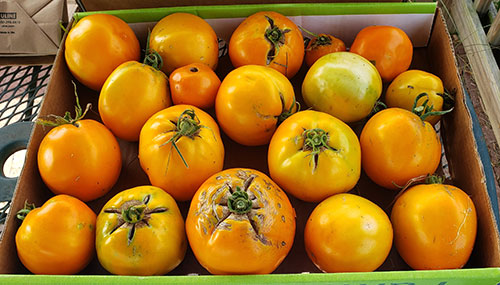Troubleshooting Tomato Issues
 With the year’s tomato gardens now in the ground and growing, there may be some looming issues on your mind if you have had problems with your plants in the past.
With the year’s tomato gardens now in the ground and growing, there may be some looming issues on your mind if you have had problems with your plants in the past.
Tomatoes are one of the most popular vegetables to grow, and with them comes a plethora of concerns that may arise. Why are the ends of your fruit sunken and rotten? Why is the fruit cracking? Why are the tomatoes never reaching full ripeness?
Often the answer to these questions is not, in fact, a disease, but simply the environment surrounding the plants. Let’s take a look at some of the more common ones.
Blossom-end rot:
Sunken, browned, ends on tomatoes typically indicate a condition known as blossom-end rot. Though normally known as a tomato condition, you can actually watch this occur on squash, peppers, and melons, and the cause is always the same-–a lack of calcium. Conducting a soil test to know the exact nutrients available in your garden can help with alleviating this issue. The test will not only tell you what nutrients you already have available, it will give you recommendations as to which nutrients can be supplemented for optimal growth. Keeping a regularly moist soil and changing up the tomato variety being utilized may also help with alleviating this condition.
Choose your varieties with care:
With many tomato conditions, the variety being utilized can directly dictate the issue that you have showing up, as some kinds of tomatoes are just less hardy than others. Paying attention to the plant variety and doing a little background reconnaissance before purchase can help alleviate problems in many instances.
Catfacing, a condition where the flesh of the tomato rolls inward on itself creating open wounds, is another such ailment caused by the variety of the plant, and as such, the only real fix to it is selecting a different variety.
If you happen to have tomatoes that never fully ripen, or only parts of the fruit do, this is called “Yellow Shoulders.” The cause of this condition is unknown but, yet again, the solution is written in the prevention--variety selection. Many vegetable varieties simply do not perform well in general or are better adapted to other areas than this one.
Stress can lead to sunburn:
 If you are witnessing a bleaching of the skin on your tomatoes, you are likely observing sunscald, which is exactly as it sounds--a sunburn. Typically, this will happen when the leafy canopy of the plant itself is too thin and not producing enough shade, and the solution is looking to your overall plant health. Has your plant been receiving various amounts of water? Is it stressed out by insects? Did it get zapped by errant 2,4-D? Something has stressed your plant out, causing the lack of leaves and therefore causing the sunburn. Make your plant less stressed to fix the problem.
If you are witnessing a bleaching of the skin on your tomatoes, you are likely observing sunscald, which is exactly as it sounds--a sunburn. Typically, this will happen when the leafy canopy of the plant itself is too thin and not producing enough shade, and the solution is looking to your overall plant health. Has your plant been receiving various amounts of water? Is it stressed out by insects? Did it get zapped by errant 2,4-D? Something has stressed your plant out, causing the lack of leaves and therefore causing the sunburn. Make your plant less stressed to fix the problem.
Uneven watering can cause cracks:
You may witness growth cracks on your tomatoes, another problem caused by uneven water intake. These generally resemble literal stretch marks on the skin of the tomato, in round, horizontal, circles. As the plant uptakes too much water at once, or amounts that are more than it will typically get, this will occur as the fruit becomes engorged too quickly.
Tomato leaf curl:
 And then there is the very common matter of tomato leaf curl. This condition is caused by general stress: if the weather has been all over the place; if the plant has gotten too much water and is growing too fast; or if the branches have been over-pruned. The good news? It just looks bad, and doesn’t actually affect tomato yield.
And then there is the very common matter of tomato leaf curl. This condition is caused by general stress: if the weather has been all over the place; if the plant has gotten too much water and is growing too fast; or if the branches have been over-pruned. The good news? It just looks bad, and doesn’t actually affect tomato yield.
Fertilize wisely:
Be careful when caring for your tomatoes that you do not over-supplement the soil with fertilizer, as while the plants need fertilizer to yield well, too much nitrogen can cause your plants to yield very little. Applying a low range nitrogen fertilizer once before planting, and three times during the growing season is the best route to go. The larger the amount of nitrogen in the fertilizer, the more you will want it diluted.
Much tomato care simply comes down to the environment in which it grows. So fertilize correctly, water efficiently, and choose some varieties on which you can rely. Your tomato issues will be a thing of the past.

